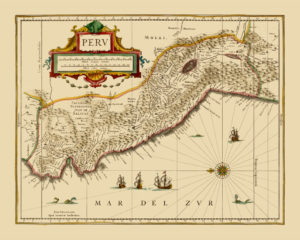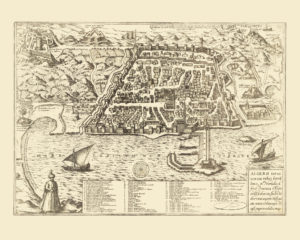Map of the Viceroyalty of Peru (an administrative unit of the Spanish Colonial Empire at that time), 1600.
By 1600, the last Inca Emperor had died and the Inca Empire had been under Spanish rule for over two decades. The Viceroyalty of Peru was established by the Spanish, which also included the areas of what is today Ecuador and Bolivia. Spanish supremacy was a major step towards the downfall of Inca civilisation. Many aspects of Inca culture were systematically destroyed by Spanish colonial officials. Several waves of epidemic diseases brought over from Europe by the occupiers were, even more, destructive: smallpox, measles, influenza and typhus ravaged the majority of the Inca population. To learn more about the Spanish conquest of what is now Peru, read “The Conquest of the Incas” by John Hemming or “In Search of an Inca: Identity and Utopia in the Andes” by the Peruvian author Alberto Flores Galindo.
Buy restored reproduction of this map printed on a high quality handmade paper here.




